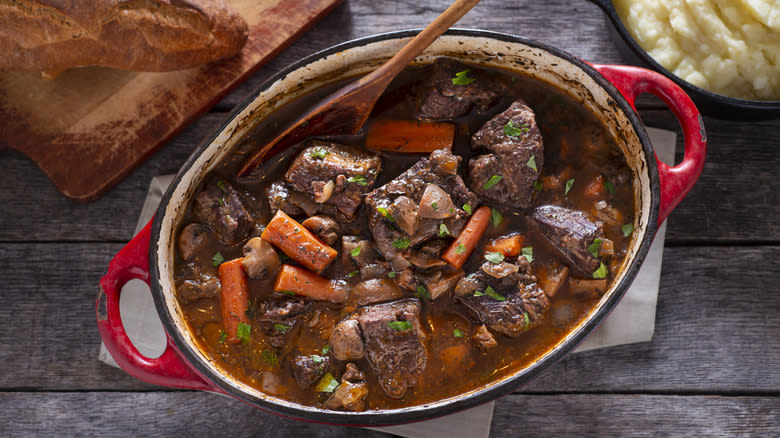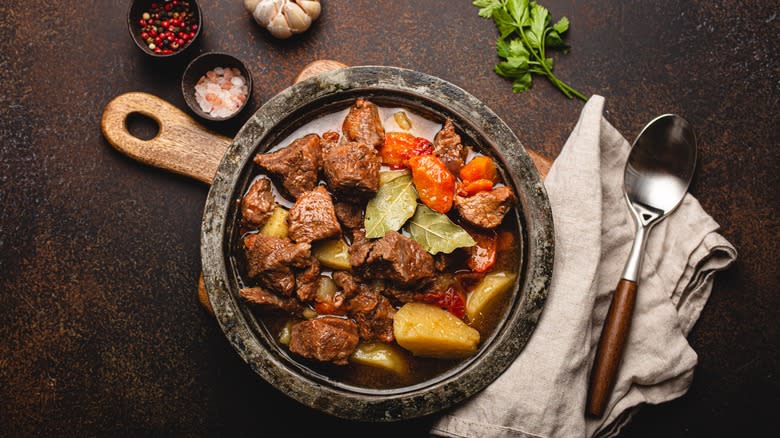The Textural Mistake You Need To Avoid When Making Beef Stew

Beef stew is a classic recipe, filled with all the makings of the perfect cozy dish. Savory chunks of beef, sweet carrots, and tender potatoes are certainly delicious, but the real star is the luscious broth. Good beef stew has an incredible, thick texture, but a common mistake can lead your stew to becoming too dense.
The main difference between soup and stew is the amount of liquid they're cooked in. While soups have a thinner texture that closely resembles water, stews simmer for longer, making them thick and rich. The full-bodied texture is integral to stew, but it should never be overly thick. If you find your beef stew reaching this consistency, it may be due to an excess of flour or cornstarch that's been added as a thickener. Some recipes often call for a roux or slurry, two concoctions used to thicken gravy, to be added to beef stew. However, beef stew shouldn't embody the same heavy, concentrated feel that gravy has, so you certainly don't need the extra steps.
Stew primarily gets its texture from the long, extended simmer it undergoes, allowing the liquid to dissipate and the broth to grow heavier. Old-fashioned beef stew also tends to have potatoes, which gives the stew a decent amount of starch. Plus, you can lightly coat the beef in cornstarch for a better sear – the remaining powder will transfer into the stew, giving it a slightly richer texture.
Read more: Your Guide To The Different Cuts Of Steak
What Should You Do If Your Beef Stew Is Too Thick?

If you've already gone a little too far with the flour and cornstarch, then that's completely fine. The simple fix is just to add a little more broth or water to the stew and stir well. Beef broth is preferred flavor-wise, and you can add in more herbs and aromatics to ensure that your stew tastes right. When you start to notice the beef stew getting a little too thick, cover the pot completely. Leaving the pot uncovered allows the steam to escape, resulting in a thicker stew. With the steam trapped, the liquid will go back into the stew, ensuring that it remains the right texture.
While adding thickeners to beef stew isn't always the best choice, there are some cases where it's completely reasonable. For a stew sans potatoes, like aromatic garlic-ginger beef stew, sprinkling in some flour prior to adding broth will give your stew the hearty texture it's meant to have. It's also common to accidentally add a little too much water or broth, so if the liquid doesn't go from simmering alone, a bit of flour is okay. To prevent yourself from adding too much, aim for two tablespoons of flour per five cups of water or broth.
Read the original article on Tasting Table


